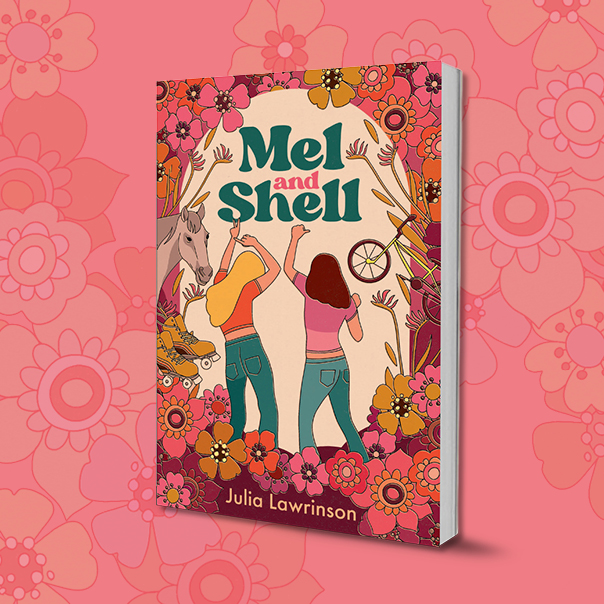Writer Julia Lawrinson’s latest book shows that there was more to life in 1979 than ABBA, Young Talent Time and visits to the roller rink

Mel and Shell is set in 1979. What was going on then?
For Sandgropers of a certain age, you’ll remember that 1979 was promoted as the 150th anniversary of English settlement in Western Australia. There were fetes, re-enactments (including the Parmelia Yacht Race), and every primary school child was given a diary with lots of historical pictures, as well as being forced to learn square dancing. For kids, ABBA was at its most popular, rollerskating was huge, Tom Baker was Doctor Who, Tina Arena was in Young Talent Time, Countdown was epic and BMX was just taking off.
Also, at the New Year’s celebration, Ken Colbung [Nundjan Djiridjarkan], who had been invited to play the didgeridoo, handed the Governor a notice of eviction. Interestingly this did not get nearly as much publicity as the Parmelia Yacht Race or the square dancing.
Why do you think 1979 will be interesting to kids today?
Growing up in the 1970s was very different to growing up today. There were no computers, no internet, no social media. Most kids roamed around suburbs on their bikes and on foot, played the few records they had over and over again, and had to make their own fun. We were told how good we had it by parents who grew up without indoor plumbing or washing machines. But kids still had to work out how to cope with change: it was the time when parents were just beginning to be able to divorce, and divorce they did. We were the first generation where your parents getting divorced became more common, but there was still a bit of stigma attached to it.
What do you hope kids will learn about the time when you grew up?
I hope they learn that some things are enduring, like having to work out how you want to be in the world, and what it means to stand up for what you know is right. I also hope they appreciate the great changes that have happened, like being tolerant of people who are different, and the idea that you don’t have to put up with bullying.
Also, the way we think about history now is very different. Back then, the focus was on the English settlers and their struggles: if you were Indigenous, your history was ignored, and the same for migrant families and refugees. It was also very much about the heroic men, and there wasn’t much mention of the women and children who came out with them. I remember wondering about these things when I was a kid: I remember, for example, wandering the banks of the Canning River and imagined how it would have been for the Indigenous people living there before white people arrived.
You’ve written Mel and Shell in letters. Why?
I’ve been an avid diary writer all my life, and when I was young I addressed my diary to a fictional person, in homage to Anne Frank. So I am very comfortable with the format. I also think it creates an immediacy between the book and its reader.
As well as ABBA, Doctor Who and rollerskating, Mel and Shell features pets. Why?
When I was growing up we always had cats from a dairy farm who were beautifully natured tabbies one and all. Now I have a fourteen-year-old Jack Russell and a rescue Chihuahua, and taking them to the dog park every day is the ultimate joy. Pets are hugely important for kids, especially when they are going through tricky times.


